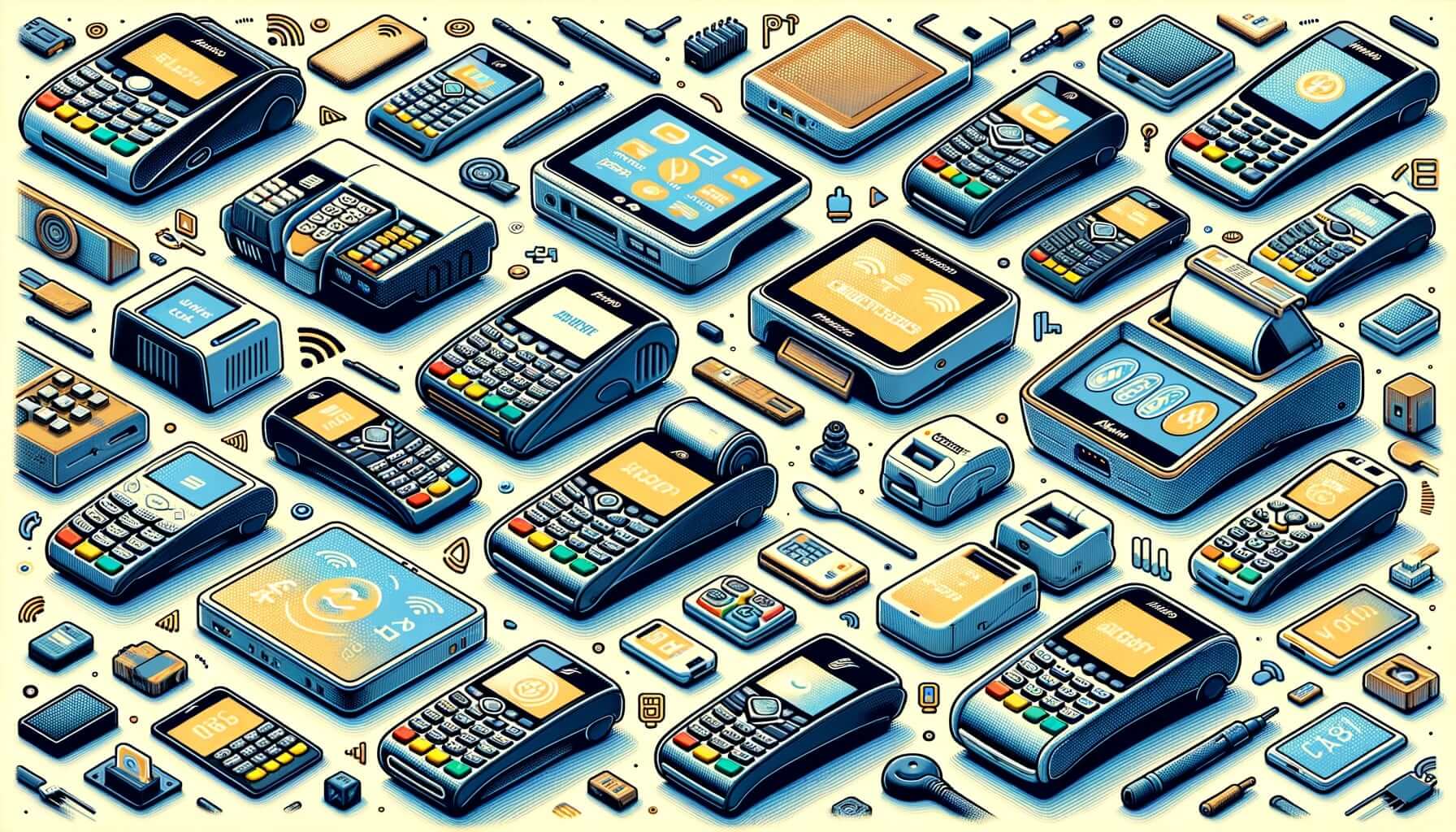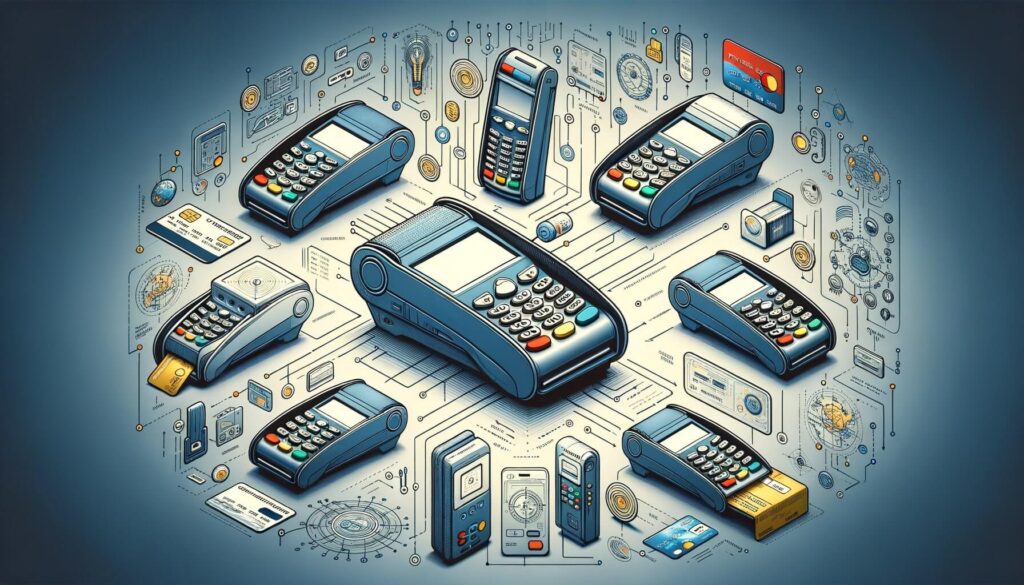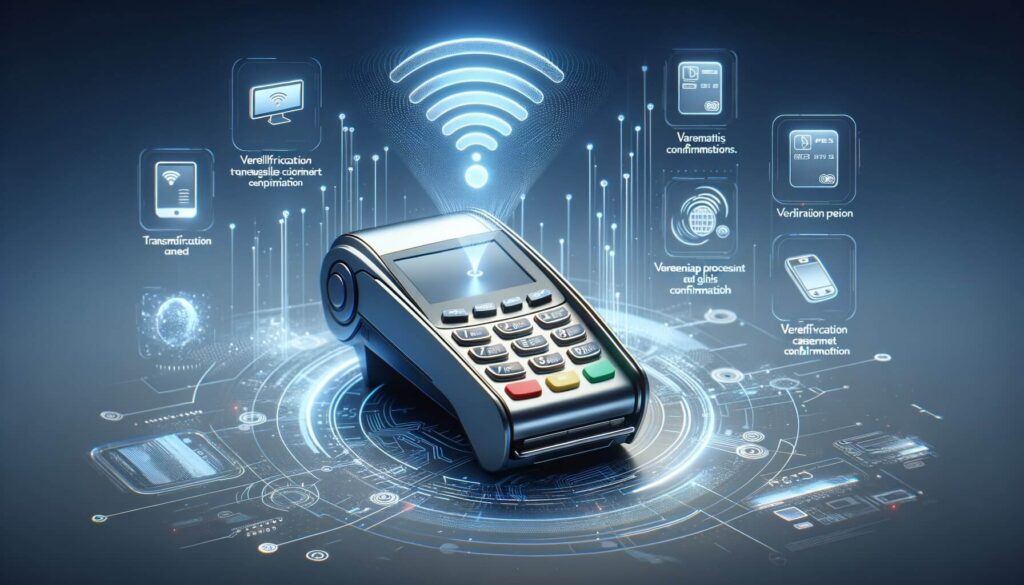
By Crystal Hopkins March 31, 2025
In today’s digital age, credit card payments have become the norm for businesses of all sizes. Whether you run a small retail store or a large e-commerce platform, having a reliable and efficient credit card terminal is crucial for processing payments seamlessly.
However, with the wide variety of options available in the market, choosing the right credit card terminal can be a daunting task. This comprehensive guide aims to help you navigate through the different types of credit card terminals and determine which one is the best fit for your business.
Traditional Credit Card Terminals: Exploring the Basics and Features

Traditional credit card terminals have been the go-to option for businesses for many years. These terminals are typically countertop devices that connect to a phone line or internet connection to process payments. They come equipped with a keypad for entering payment information and a receipt printer for generating receipts. Some advanced models also include features like touchscreens, NFC capabilities, and EMV chip card readers.
One of the key advantages of traditional credit card terminals is their reliability. They are designed to handle high transaction volumes and are less prone to technical glitches. Additionally, they offer a high level of security, as they comply with industry standards such as Payment Card Industry Data Security Standard (PCI DSS). However, traditional terminals can be expensive to purchase upfront, and they may require a long-term contract with a payment processor.
Mobile Credit Card Terminals: Convenience and Flexibility on the Go

With the rise of smartphones and tablets, mobile credit card terminals have gained popularity among businesses that require flexibility and mobility. These terminals utilize mobile apps and card readers that can be attached to a smartphone or tablet, turning them into portable payment processing devices. Mobile terminals connect to the internet via Wi-Fi or cellular data, allowing businesses to accept payments anywhere, anytime.
Mobile credit card terminals offer several advantages. They are cost-effective, as they eliminate the need for expensive hardware and long-term contracts. They also provide convenience, as they allow businesses to accept payments on the go, whether it’s at a trade show, a pop-up shop, or a customer’s doorstep. Furthermore, mobile terminals often come with additional features like inventory management, customer data collection, and invoicing capabilities.
Virtual Credit Card Terminals: Secure Online Payment Processing

In the era of e-commerce, virtual credit card terminals have become essential for businesses that primarily operate online. These terminals are web-based platforms that allow businesses to process credit card payments securely over the internet. Virtual terminals can be accessed from any device with an internet connection, making them highly convenient for businesses that operate remotely or have a large online presence.
Virtual credit card terminals offer a wide range of features to streamline online payment processing. They typically include a virtual terminal interface where businesses can manually enter payment information, as well as the ability to securely store customer data for future transactions. Virtual terminals also support recurring billing, allowing businesses to set up automatic payments for subscription-based services. Additionally, they often integrate with popular e-commerce platforms, making it easier to manage online sales.
Wireless Credit Card Terminals: Unleashing the Power of Mobility

Similar to mobile credit card terminals, wireless credit card terminals offer businesses the flexibility to accept payments on the go. However, unlike mobile terminals that rely on smartphones or tablets, wireless terminals are standalone devices that connect to the internet via a wireless network. They are ideal for businesses that require mobility but prefer a dedicated device for payment processing.
Wireless credit card terminals offer the convenience of accepting payments anywhere within the range of a wireless network. They are particularly useful for businesses that operate in outdoor settings, such as food trucks, festivals, or sports events. These terminals often come with long-lasting batteries, ensuring uninterrupted payment processing throughout the day. Additionally, they offer the same level of security as traditional terminals, with features like encryption and EMV chip card readers.
Point-of-Sale (POS) Systems: Integrating Payment Processing with Business Operations
Point-of-Sale (POS) systems have revolutionized the way businesses handle payment processing and manage their operations. These comprehensive solutions combine hardware, software, and payment processing capabilities into a single integrated system. POS systems typically include a touchscreen terminal, cash register, barcode scanner, receipt printer, and other peripherals, depending on the specific needs of the business.
POS systems offer numerous benefits for businesses. They streamline the checkout process by automatically calculating totals, applying discounts, and generating detailed receipts. They also provide inventory management features, allowing businesses to track stock levels, manage purchase orders, and generate sales reports. Additionally, POS systems often integrate with other business tools like accounting software and customer relationship management (CRM) systems, providing a holistic view of the business.
Contactless Payment Terminals: Embracing the Future of Transactions
Contactless payment terminals have gained significant popularity in recent years, thanks to the convenience and speed they offer. These terminals utilize Near Field Communication (NFC) technology to enable contactless payments, allowing customers to simply tap their contactless-enabled cards or mobile wallets on the terminal to complete a transaction. Contactless payments are not only faster but also more secure, as they eliminate the need for physical contact or the exchange of sensitive card information.
Contactless payment terminals are becoming increasingly common in various industries, including retail, hospitality, and transportation. They offer a seamless and frictionless payment experience for customers, reducing wait times and enhancing customer satisfaction. Moreover, contactless payments are expected to continue growing in popularity, as more consumers adopt mobile wallets and wearable devices that support contactless transactions.
Choosing the Right Credit Card Terminal for Your Business: Factors to Consider
When selecting a credit card terminal for your business, it’s essential to consider several factors to ensure you make the right choice. Here are some key considerations to keep in mind:
1. Business Type and Size: The nature and size of your business will influence the type of credit card terminal that best suits your needs. For example, a small retail store may benefit from a traditional countertop terminal, while a food truck or a mobile service provider may require a mobile or wireless terminal.
2. Payment Volume: Consider the average number of transactions your business processes daily or monthly. If you have a high volume of transactions, you may need a terminal that can handle a large number of transactions quickly and efficiently.
3. Connectivity Options: Evaluate the available connectivity options in your business location. If you have a stable internet connection, a traditional or virtual terminal may be suitable. However, if you require mobility or operate in areas with limited internet access, a mobile or wireless terminal may be a better choice.
4. Security Features: Ensure that the credit card terminal you choose complies with industry security standards, such as PCI DSS. Look for features like encryption, tokenization, and EMV chip card readers to protect your customers’ payment data.
5. Cost and Fees: Consider the upfront cost of the terminal, as well as any ongoing fees associated with payment processing. Compare the pricing structures of different providers to find the most cost-effective solution for your business.
6. Integration Capabilities: If you use other business tools like accounting software or CRM systems, ensure that the credit card terminal can integrate seamlessly with these systems. Integration can streamline your operations and provide valuable insights into your business performance.
Frequently Asked Questions (FAQs) about Credit Card Terminals
Q1. What is a credit card terminal?
Answer: A credit card terminal is a device or software that allows businesses to process credit card payments securely. It typically includes features like a keypad, card reader, receipt printer, and connectivity options.
Q2. How do credit card terminals work?
Answer: Credit card terminals work by securely transmitting payment information from the customer’s card to the payment processor, which then communicates with the card issuer to authorize the transaction. The terminal generates a receipt for the customer and transfers the funds to the merchant’s account.
Q3. Can I use my smartphone as a credit card terminal?
Answer: Yes, with the help of mobile credit card terminals, you can turn your smartphone or tablet into a portable payment processing device. These terminals typically require a mobile app and a card reader that connects to your device.
Q4. Are contactless payments secure?
Answer: Yes, contactless payments are secure. They utilize encryption and tokenization technologies to protect sensitive card information. Additionally, contactless payments do not require physical contact or the exchange of card details, reducing the risk of fraud.
Q5. What is the difference between a traditional and a virtual credit card terminal?
Answer: A traditional credit card terminal is a physical device that connects to a phone line or internet connection to process payments. A virtual credit card terminal, on the other hand, is a web-based platform that allows businesses to process payments securely over the internet.
Conclusion
Choosing the right credit card terminal is crucial for businesses looking to streamline their payment processing and provide a seamless experience for their customers. Traditional terminals offer reliability and security but can be expensive. Mobile terminals provide flexibility and convenience on the go, while virtual terminals are ideal for online businesses.
Wireless terminals combine mobility with dedicated hardware, and POS systems integrate payment processing with business operations. Contactless payment terminals offer a fast and secure payment experience. By considering factors like business type, payment volume, connectivity options, security features, cost, and integration capabilities, businesses can make an informed decision and select the credit card terminal that best suits their needs.